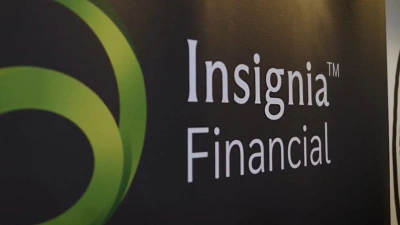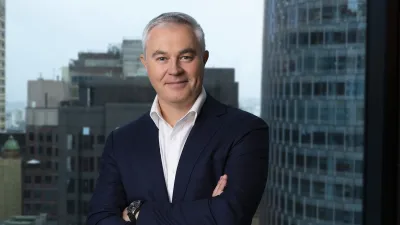Transparency rules: seeing through the credit squeeze
Fixed interest has been a very unfavourable investment for a long time.
With average returns hovering around 6 per cent, fixed interest looked a very poor performer against the double digit returns of Australian equities and property.
However, Australian equities have recently been on a rollercoaster ride, although property has stayed true to form.
But the normally conservative world of fixed interest has also been in the spotlight with the problems associated with US sub-prime mortgages.
Normally true-to-label fixed interest managers have not touched these higher risk investments, but some have been affected because of the mortgages being packaged up with other products.
In a research paper by Putnam Investments, sub-prime mortgages in the US are the highest risk in the real estate loan market.
They are given to the riskier borrowers, but they carry a higher interest rate. The downside is the defaults and foreclosures are also higher.
Putnam research has found sub-prime mortgages would make up less than 5 per cent of a mortgage securitisation deal and the margin on these mortgages for the investor could be as high as 300 basis points.
Sub-prime mortgages accounted for 25 per cent of all mortgages issued in the US during 2006, which was at almost record levels.
FIIG Securities managing director Jim Stening said while there were a few fixed interest managers that had some exposure to the sub-prime market, the majority were unaffected.
“Sub-prime mortgages are not a major component of a fixed interest portfolio,” he said.
“Most managers are investing in AAA investments products, but I agree there will be some reassessment of the assets included in fixed interest products.”
Aberdeen Asset Management head of fixed income Bill Bovingdon said some managers had been tempted by the higher returns of sub-prime mortgages, but most managers are always concerned about risk in the asset class.
“If you look at the traditional model of fixed interest funds, they have a low risk premium and almost no volatility,” he said.
“The only way to boost returns was to move into non-structured credit investments.”
This did boost returns of some funds as traditional government and corporate bonds have been delivering fairly consistent returns for the past decade.
“The problem was that the non-structured credit market was built on leverage,” Bovingdon said.
“Anything could tip these investments over at any time, so the sub-prime problems are a bit of a wake-up call.”
Fixed interest managers will now be more discriminating on the types of investments they are paying for, he said, and will move back to traditional assets such as corporate bonds.
But sub-prime mortgages could have an impact on the overall US economy, which again would affect all fixed interest managers and returns on their funds.
“In pure fixed interest markets there is limited exposure to these sorts of bonds, but they have the ability to drag down the US economy,” Bovingdon said.
“There will probably be more grief leading to uncertainty in markets which have exposure to sub-prime mortgages.
“A lot of sub-prime mortgages can fall over, but it is usually only a small part of a portfolio and will not affect performance dramatically of those managers with exposure.”
Bovingdon said one impact of this crisis would be the ability to freeze credit markets, which might cause problems for corporate borrowers.
“The jury is out until October/November when northern markets return to liquidity and we find out who has got exposure to what,” he said.
Tyndall head of bonds Roger Bridges said the sub-prime crisis had been a catalyst to some major changes.
“What has really happened is the fall of the sub-prime has people looking at the underlying collateral of the (fixed interest) investment,” he said. “It has got rid of complacency.”
Bridges said managers are again looking at what is deemed to be a fixed interest investment and what is some sort of leveraged borrowing asset.
“We have got more traditional funds that only invest in government and corporate paper which is compared to people investing in highly leveraged CDO (collateralised debt obligation) funds,” he said.
“What that will mean is the investors in fixed interest will want to look into the ‘black boxes’ and see what the investment process is and where the money is being placed.
“Previously some fixed interest managers were willing to buy a spread without seeing what all the investments were and the types of risk involved.”
Bridges aid Tyndall is a very conservative fixed interest manager that only invests in fixed interest assets that are investment grade.
“It is conventional but we know what we are investing in,” he said.
“Other managers have wanted to differentiate between themselves and that is why they have got into trouble.
“Fixed interest managers will have to be savvier as to what they are investing in if they want to stay out of trouble.”
While the focus has been on the US sub-prime mortgage market, is there potential for a similar crisis to occur in Australia?
Recently mortgage originator RAMS was hammered on the stock market as it tried to find new sources of underwriting to cover its mortgages.
But fixed interest managers in Australia see no local crisis developing.
Lewis Securities director Tony Lewis said while sub-prime will affect some global managers, there is little chance of a similar situation happening in Australia.
“The US sub-prime mortgage debt is alien to our mortgage system,” he said.
“In the US if you borrow for a mortgage and default, you leave the keys in the door and it is the bank’s job to get out of the mess.
“And if the mortgagee is poor, there are laws stopping a sale of the house.”
Lewis said while mortgages can be foreclosed in Australia, the strong residential house market means if the bank sells the house, they will recover their funds.
While Australia does have low-doc loans that can be described loosely as a sub-prime mortgage, the total market is small and they are unlikely to cripple money markets if some fail.
“There are not many mortgages under water in Australia,” Lewis added.
One local effect of the sub-prime fallout will be that credit will be harder to get and that will affect corporate bond offerings.
“The banks will be more cautious lending and only companies making profits can borrow,” he said.
“All the rest will have difficulty raising loans.”
Lewis believes there will be a credit squeeze for a number of years.
“The cost of money will go up and unless companies get critical mass, they will struggle to borrow money,” he said.
Stening said mortgage securitisation is well supported in Australia and not many offerings have low-doc mortgages in the package.
“There are obviously some Australian sub-prime mortgages in some products,” he said, “but it will be localised, but as house prices are not going down their risk is low.”
Bovingdon said examples of problems happening in the Australian sub-prime market are isolated and RAMS is almost a one-off case.
“Most of the other similar business models offering mortgages are stronger with locked in positions for credit,” he said.
“Some non-bank organisations will find it harder to raise credit and we do have some concerns about low-doc mortgages, but we will consider each securitisation on its merits.”
Bridges said Tyndall sticks to traditional fixed interest offerings and has avoided these non-conforming products.
“In Australia there are non-conforming investments, but they are not in the same league as US sub-prime,” he said.
“But we avoid non-conforming investments as we are a conservative manager.”
However, with volatility in equity markets, is this time for fixed interest to return to people’s portfolios and are fixed interest managers going to enjoy their day in the sun again?
One fixed interest manager did admit he had been invited to marketing meetings again as there is a belief that investors will want the safety of fixed interest again.
Stening said the asset classes in people’s portfolios have got broader over the past six or seven years and this is the time to include fixed interest again.
“People want traditional fixed income products when sanity returns to investing,” he said.
“Fixed interest should be the bedrock in any portfolio as uncertainty in equity markets will attract people back to the asset class.”
Lewis is not so sure, however.
“A lot of people will be hurt by CDOs and sub-prime market so there will be more bad news,” he said.
“I expect money will chase the more conservative investments as the pendulum always swings one way or the other after these events.”
But the recent equity market volatility has seen the phones running red hot at Lewis’ business.
“We have seen three finance companies fail, but I don’t think the man in the street is worried,” he said.
“In the present crisis the phones haven’t been ringing like they did in the past.
“There is an incredible appetite for credit risk.”
Lewis said while people still re-assess their portfolios, they are not moving to safe havens such as fixed interest.
“The man in the street believes the current market volatility is a hiccup and things will bounce back,” he said.
“Nobody is worried, so we have got to get their mindsets back to believing fixed interest is a safe investment in times of volatility.”
Bovingdon is slightly more optimistic about fixed interest managers being included in portfolios again.
“The case for good fixed interest managers has just gone up in light of recent events,” he said.
“We will see the return of the active fixed-interest manager and there are opportunities to bring out new products with (fixed interest) managers diversifying globally as they look for alpha.”
Bridges is also hopeful advisers will once again look at fixed interest for their clients’ portfolios.
“I hope it is our day in the sun and a lot of advisers will return to fixed interest for their clients,” he said.
“The trouble is the advisers tend to look outside the box for investments and conventional fixed interest doesn’t fall into that space.”
Bridges argues firmly fixed interest should now be part of a portfolio as an alternative to equities-type products.
“I would like people to look at us favourably as they deal with volatility,” he said.
“But people will say what has happened in markets is a one-off and complacency will return.”
Economists are predicting volatile markets for a number of months yet, but time will tell if investors move traditionally in these times and allocate funds to fixed interest products.
Recommended for you
Net cash flow on AMP’s platforms saw a substantial jump in the last quarter to $740 million, while its new digital advice offering boosted flows to superannuation and investment.
Insignia Financial has provided an update on the status of its private equity bidders as an initial six-week due diligence period comes to an end.
A judge has detailed how individuals lent as much as $1.1 million each to former financial adviser Anthony Del Vecchio, only learning when they contacted his employer that nothing had ever been invested.
Having rejected the possibility of an IPO, Mason Stevens’ CEO details why the wealth platform went down the PE route and how it intends to accelerate its growth ambitions in financial advice.














